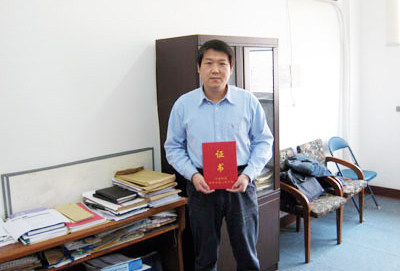Researchers from the Shanghai Institute of Ceramics and the Chinese Academy of Sciences have developed a wallpaper that not only resists fire, but raises the alarm when one breaks out.
In a paper published in the American Chemical Society’s ACS Nano journal, the scientists describe a how adding very fine wires and sensors can dramatically improve a building’s fire safety.

Professor Ying-Jie Zhu
Standard wallpaper and wallpaper paste are flammable, and so provide fuel for a house fire. This covering contains heat sensors and “nanowires” made from hydroxyapatite, a member of the calcium phosphate family and the main inorganic ingredient in human bones and teeth.
These act as insulators at normal temperatures, but become electrically conductive at temperatures above 130°C. When this happens, a circuit is formed between the sensors and the alarm, and an alert is sent out. It takes about two seconds for the wallpaper to respond to a fire, and will continue for at least five minutes.
Materials scientists have been looking for some time for industrial applications for hydroxyapatite, but it has proved difficult to “grow” nanostructures longer than 100 microns (one ten thousandth of a metre).
The team led by Ying-Jie Zhu (pictured), a professor of nanoscience at the Shanghai Institute of Ceramics, has succeeded in producing large quantities of ultra-long flexible hydroxyapatite nanowires. The researchers have also developed a way to make these nanowires self-assemble into highly ordered structures by injecting a paste containing them into alcohol.
The team has been able to assemble nanowires into high-strength “nanoropes” that can be used to make the wallpaper, as well as fire-resistant textiles, fire shielding and heat insulation, and also for repairing bones.
The researchers write in the ACS Nano paper that “smart fire-alarm wallpaper” can be “processed into various shapes, dyed with different colours, and printed with a commercial printer and thus has promising applications in high-safety interior decoration of houses”.
Top image: The Shanghai team’s illustration of aspects of their hydroxyapatite nanowires






